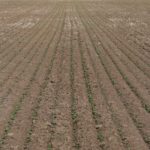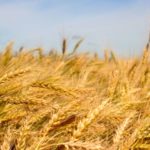Research at Manitoba Diversification Centres shows farmers can seed legumes with spring wheat to establish cover crops without hurting yield, even in dry years.


Seeding legumes with wheat shows promise gettting a cover crop established during the short growing season


Get a head start on next year’s crops with these fertility guidelines, options and pro tips
Many Prairie farmers choose to apply fertilizers to their fields in the fall to save time in the spring — a strategy Farmers Edge agronomist Thom Weir believes makes good sense for a couple of reasons. “There’s lots of data that shows seeding early has a significant benefit to yield,” he says, adding that for […] Read more
Winter ban lifted, with cautions

Q & A with CPS



Fertilizer technology allows farmers to make one pass, putting all the nitrogen in the seed row at once, and also realizing higher protein values


While not all factors can be controlled, there are ways to reduce early season stress on your crops